22Tulip tree
Liriodendron tulipifera
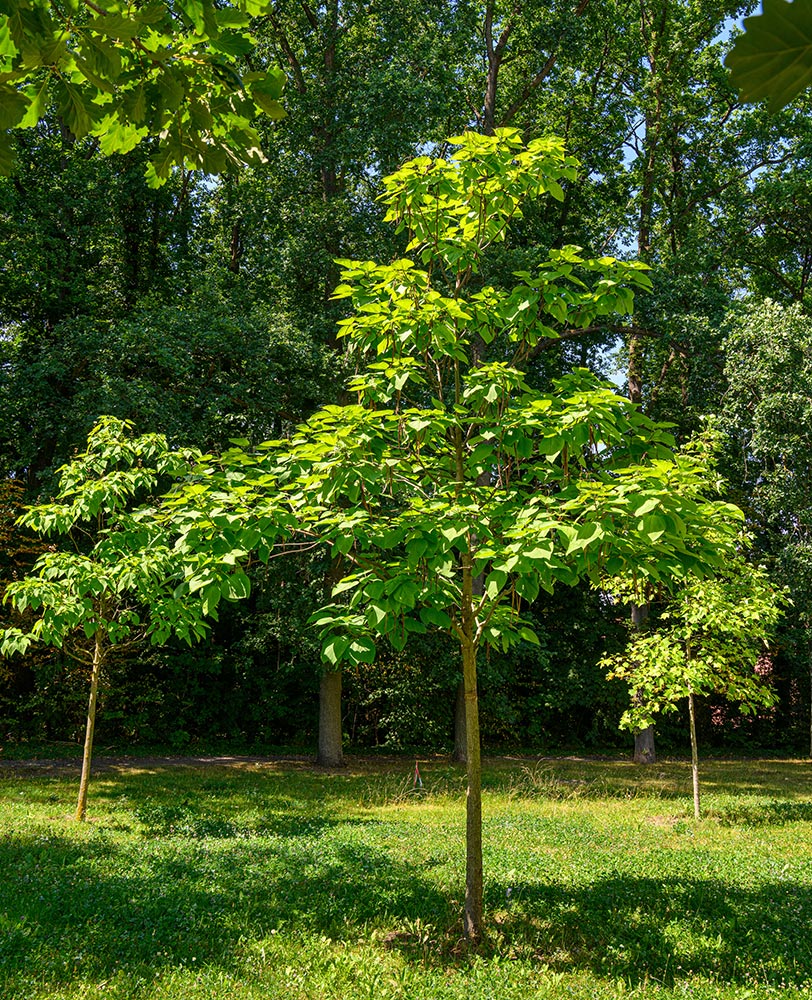
The 22nd stop on the tour is behind the wooded area to the left. The tulip tree, also American tulip tree, botanical name Liriodendron tulipifera, is one of the two species of the plant genus of tulip trees (Liriodendron) in the Magnolia family (Magnoliaceae).
Tulip trees grow up to 40 meters in height and 20 meters wide. They have a slender, straight trunk with light gray bark that is superficially furrowed. In the pyramidal crown, the branches are widely spaced, and the twigs are often pendulous. Without foliage, the crown is light; when leafy, the crown is dense and closed. The tree's foliage leaves are unusual: they are about 15 centimeters long, almost square in outline, with a tip that is straight or incised in a v-shape. Their upper side is dark green, the bottom is greenish-blue. In autumn, the leaves take on a golden yellow color. At flowering time between May and June, the tree shows the reason for its name. Then the ends of the branches are adorned by tulip-shaped flowers, four to five centimeters long, with yellow to yellow-green color and orange accents on the inside. Out of these, winged nutlets form.
Tulip trees do best in nutrient-rich, deep, fresh and loose soils in sunny locations. Under these conditions, the heat-loving but frost-hardy trees can reach ages of up to 700 years.
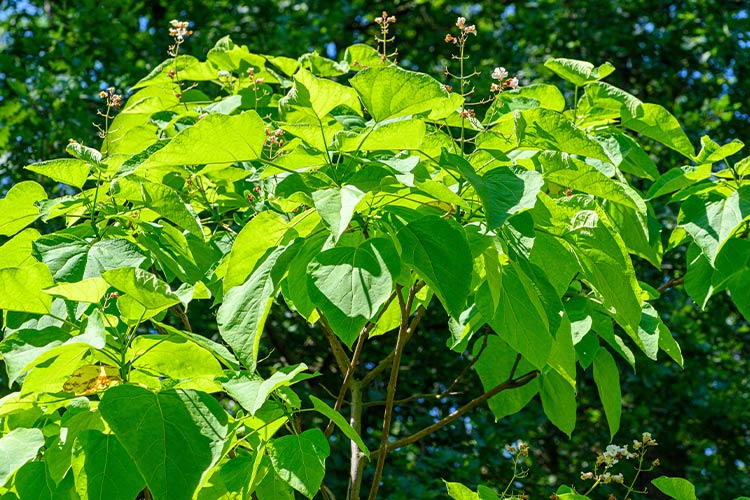
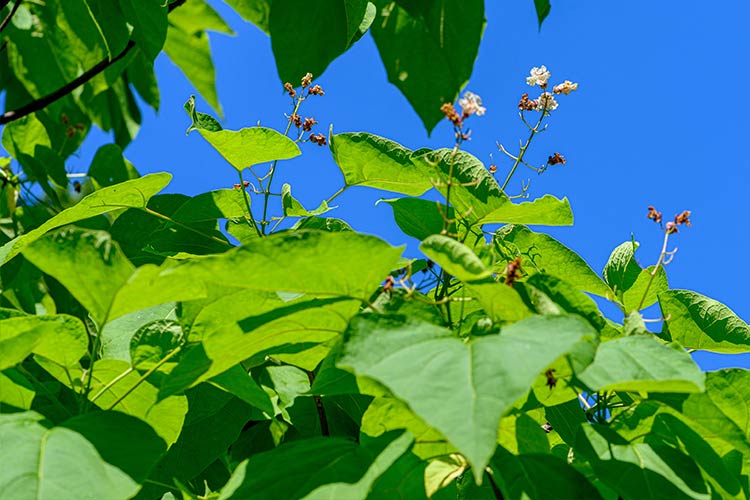
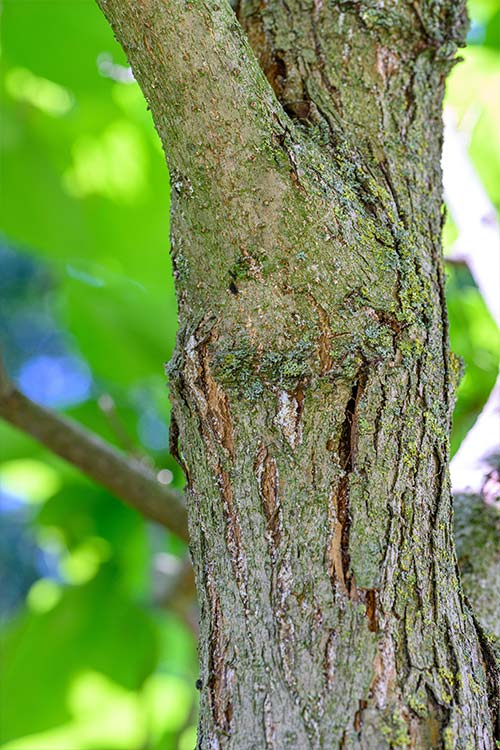
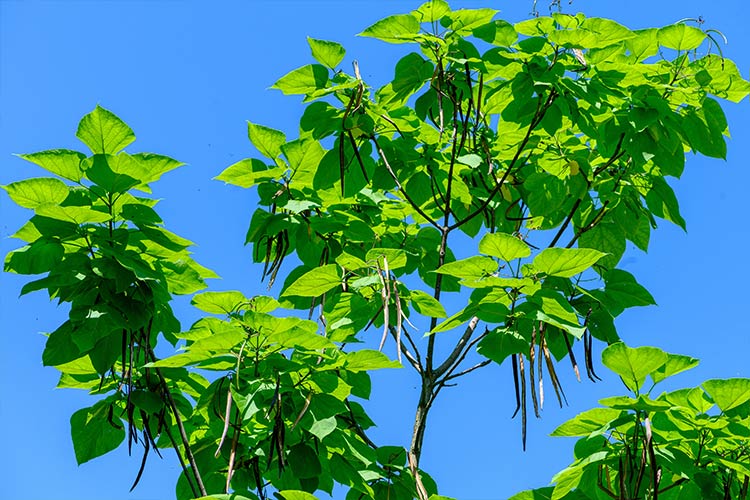
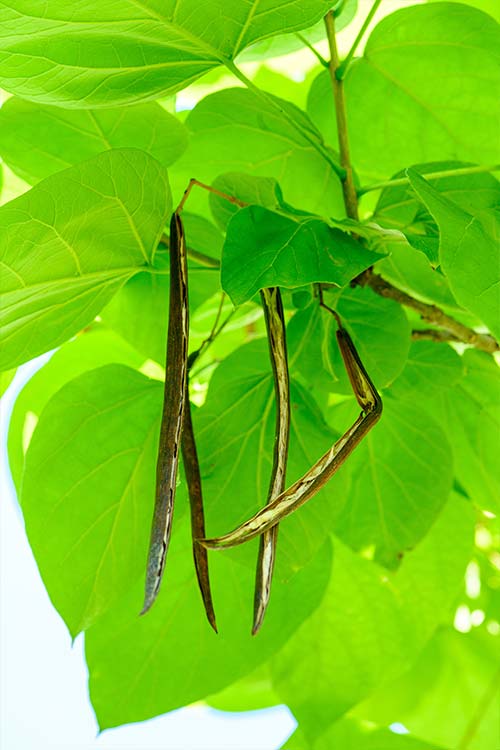
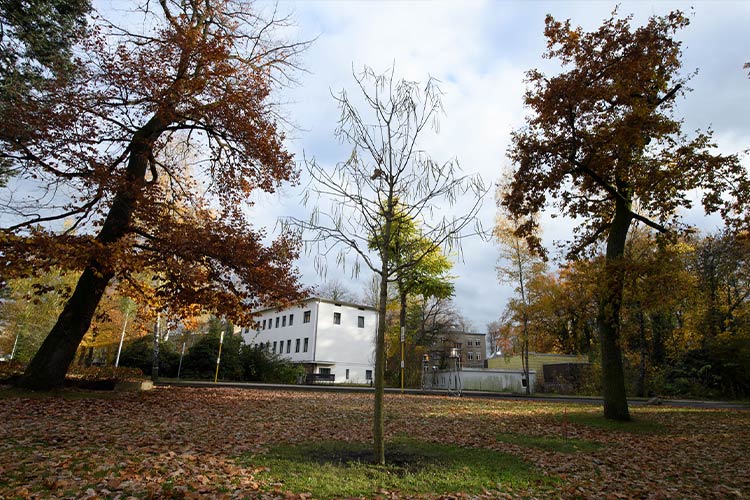
The original distribution area was eastern to central North America. Because of its imposing size, unusual foliage and attractive flowers, it also became a sought-after ornamental plant in parks in Central Europe starting in the mid-17th century. Trebnitz Castle Park in Poland is home to perhaps the oldest specimen on the continent; it is about 300 years old.
In its native country, the tulip tree is used for its wood, and it also plays a role as a bee pasture. Young trees can yield up to two kilograms of honey per year. The bark and roots can also be used medicinally. The trunk wood contains alkaloids and essential oils. It used to be used preventively as a tonic, therapeutically for fever, menstrual pain and hysteria.
The tulip tree is the official state tree of the US states of Kentucky, Indiana and Tennessee.